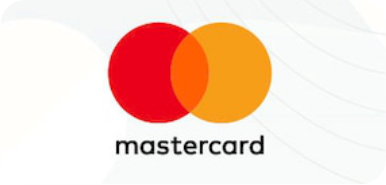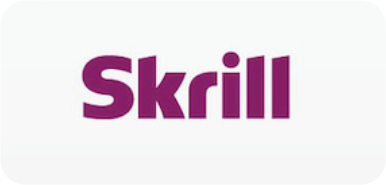One of the synthetic trading instruments that captures the attention of traders is the Crash 1000 Index due to its predictable price movements and opportunities for profit. This index is known for its characteristic downward price spikes, making it a unique asset for scalpers and short-term traders.
If you’ve been curious about trading synthetic indices, this article will provide a comprehensive overview of the Crash 1000 Index and how you can trade it effectively.
What is the Crash 1000 Index?
The Crash 1000 Index is a synthetic financial instrument available on trading platforms like Deriv. It simulates market behavior by generating sharp, downward price movements (spikes) every 1000 ticks on average. These consistent spikes create opportunities for traders to profit from bearish price action.
Key Features of the Crash 1000 Index
Some of the key features of the crash 1000 Index are:
1. Predictable Downward Spikes
The defining feature of the Crash 1000 Index is its regular downward price movements or crashes. These spikes provide traders with opportunities to capitalize on sudden price drops, especially with the right technical analysis tools.
2. Synthetic Nature
Unlike real-world financial instruments, the Crash 1000 Index is synthetic and unaffected by economic data, geopolitical news, or market sentiment. Its behavior is governed purely by algorithms, making it ideal for traders who prefer technical analysis over fundamental analysis.
3. Round-the-Clock Trading
The Crash 1000 Index can be traded 24/7, giving traders the flexibility to execute trades at any time, regardless of their time zone.
4. High Volatility
The frequent price movements of the Crash 1000 Index make it a high-volatility instrument, which can be both an advantage and a risk for traders.
Benefits of Trading the Crash 1000 Index
1. Consistent Opportunities for Scalping
The frequent price spikes make the Crash 1000 Index an attractive choice for scalpers. Traders can profit from short-term price movements multiple times a day.
2. No External Market Influences
Since the index is synthetic, it isn’t affected by economic reports, central bank policies, or other external factors. This predictability makes it easier to focus solely on technical analysis.
3. Accessibility for Beginners
Platforms like Deriv provide user-friendly interfaces and demo accounts, making it easy for beginners to start trading the Crash 1000 Index without prior experience.
4. Leverage for Increased Profit Potential
Many trading platforms offer leverage for the Crash 1000 Index, allowing traders to control larger positions with smaller amounts of capital.
Effective Strategies for Trading the Crash 1000 Index
1. Spike Trading Strategy
This strategy involves trading the sharp downward price movements that define the Crash 1000 Index. Indicators like the Relative Strength Index (RSI), Moving Averages, and Bollinger Bands are commonly used to identify overbought conditions and predict potential crashes.
For Example, If the RSI shows overbought conditions and the price is nearing a resistance level, a spike may be imminent. Place a sell trade to capitalize on the downward movement.
2. Scalping Strategy
Scalping is a short-term strategy that focuses on capturing small profits from frequent market movements. The Crash 1000 Index is perfect for scalping due to its high volatility. In Scalping, you can decide Use short timeframes like 1-minute or 5-minute charts, Combine Fibonacci retracement levels with support and resistance to identify entry points or Close trades quickly to avoid losses from sudden reversals.
3. Trend-Following Strategy
Although the Crash 1000 Index is known for its spikes, it often follows broader trends. Identifying these trends can help traders align their trades with the market direction.
4. Risk Management Strategy
Risk management is crucial when trading the Crash 1000 Index due to its volatility. Here’s how to manage your risks effectively:
- Set Stop-Loss Orders: Protect your account by setting a stop-loss for every trade.
- Limit Risk Per Trade: Risk only a small percentage of your account balance (e.g., 1-2%) per trade.
- Avoid Overleveraging: Use leverage cautiously to prevent significant losses.
5. Practice on a Demo Account
Before risking real money, use a demo account to practice trading the Crash 1000 Index. This will help you understand its price movements and test your strategies in a risk-free environment.
Common Mistakes to Avoid in Crash 1000 Index
Some mistakes you should avoid in crash 1000 Index Includes:
1. Overtrading
Overtrading often leads to poor decisions and unnecessary losses. Stick to your strategy and avoid trading out of boredom or frustration.
2. Ignoring Risk Management
Failing to use stop-loss orders or risking too much capital on a single trade can deplete your account quickly. Always prioritize risk management.
3. Chasing Spikes
Trying to predict every spike can lead to frustration and losses. Focus on high-probability setups and avoid impulsive trades.
4. Trading Without a Plan
Random trades without a clear strategy often result in inconsistent outcomes. Always have a well-defined trading plan.
Tools and Platforms for Trading the Crash 1000 Index
1. Deriv Trading Platform
Deriv is one of the most popular platforms for trading the Crash 1000 Index. It offers advanced charting tools, customizable indicators, and risk management features.
2. MetaTrader 5 (MT5)
MT5 provides a robust trading environment with tools for technical analysis, automated trading, and backtesting strategies.
3. Trading Communities
Join online forums, Telegram groups, or social media communities to learn from experienced traders and exchange insights about trading the Crash 1000 Index.
Conclusion
The Crash 1000 Index is indeed an ideal instrument for those who enjoy technical trading. However, for you to succeed, you must focus on learning its behavior, practicing your strategies on a demo account, and implementing proper risk management.
By following these steps, you can take advantage of the opportunities this synthetic index provides while minimizing risks.
Frequently Asked Questions (FAQs)
What is the Crash 1000 Index?
- The Crash 1000 Index is a synthetic trading instrument that generates sharp downward price spikes every 1000 ticks on average.
How do I trade the Crash 1000 Index?
- You can trade the Crash 1000 Index by signing up on platforms like Deriv, practicing on a demo account, and using strategies like spike trading, scalping, and trend-following.
Is trading the Crash 1000 Index risky?
- Yes, like any trading instrument, the Crash 1000 Index carries risks. Always use stop-loss orders and trade with a clear plan.
Can I trade the Crash 1000 Index 24/7?
- Yes, the Crash 1000 Index is available for trading 24/7, allowing traders to execute trades at any time.
What are the best tools for trading the Crash 1000 Index?
- The best tools include platforms like Deriv and MetaTrader 5 (MT5), which offer advanced charting and risk management features.










